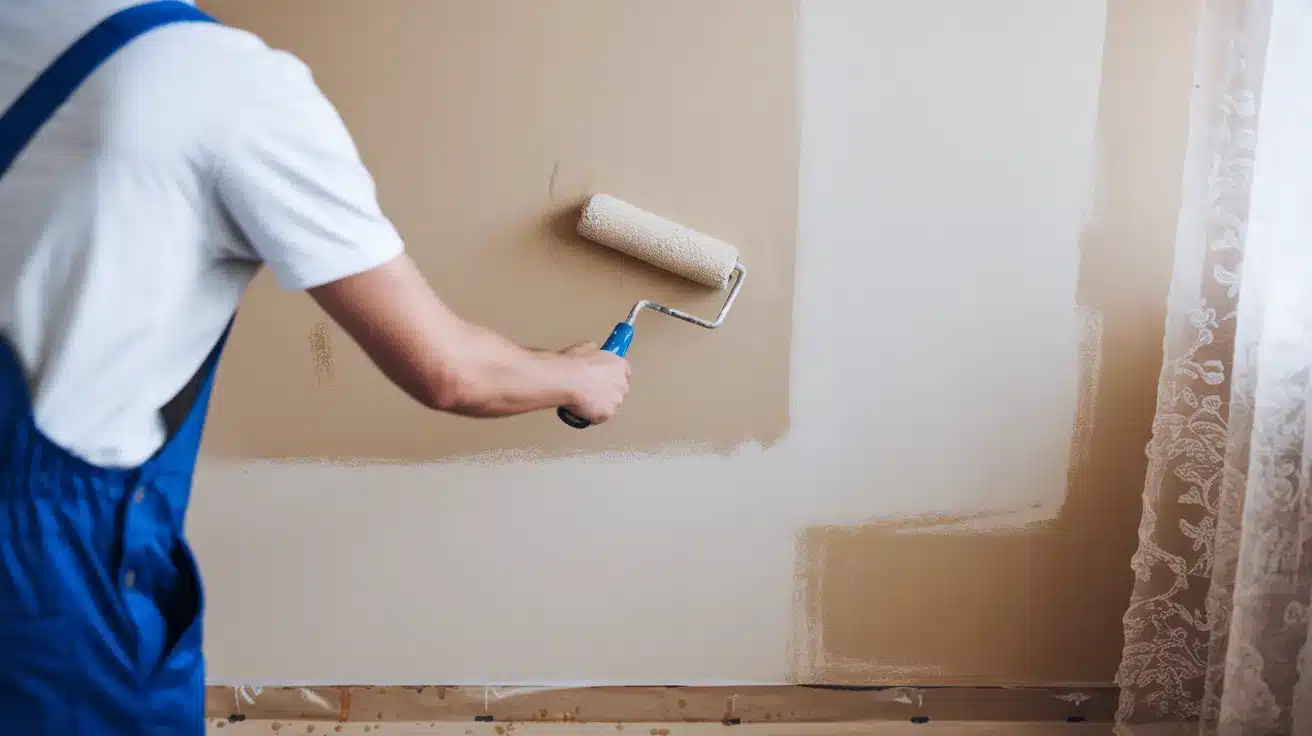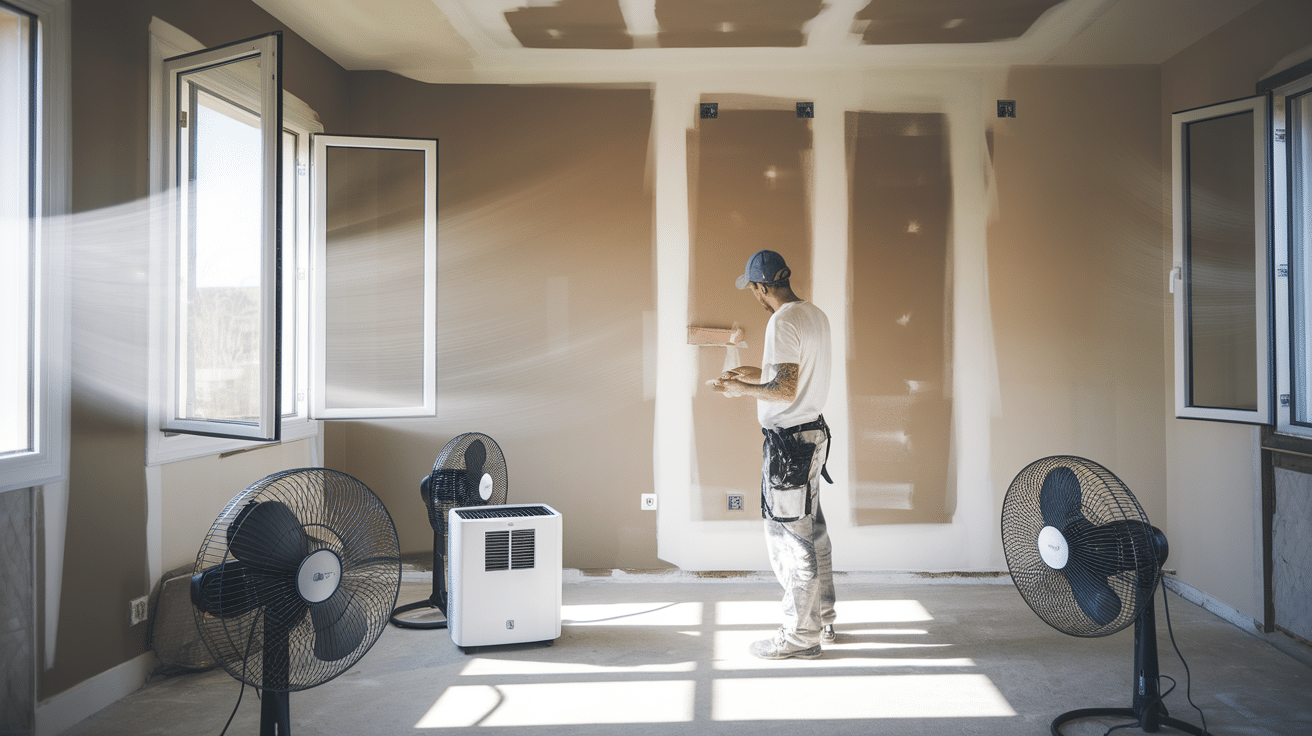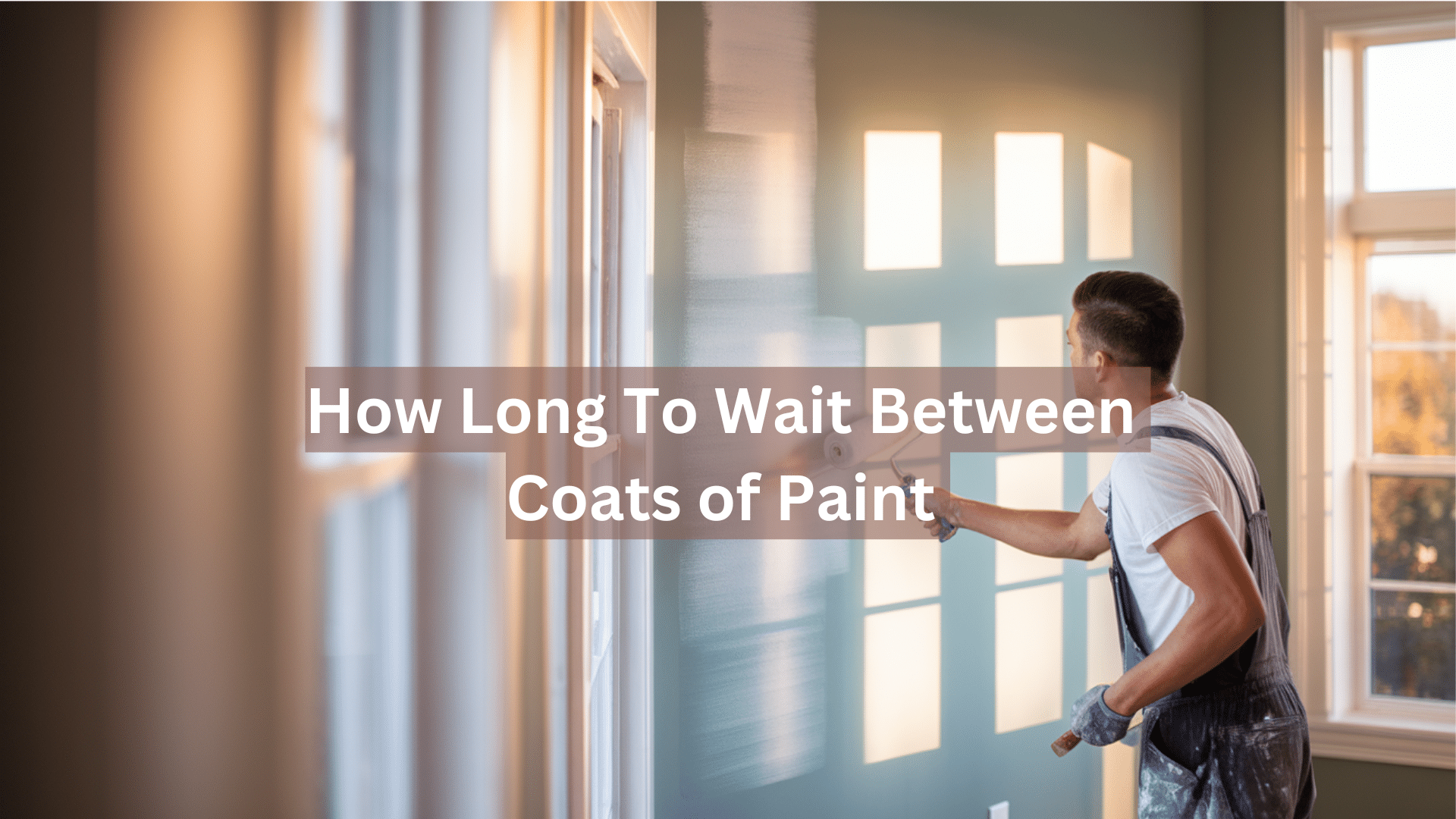Getting the timing right between paint coats is crucial for a successful project. In this guide, I’ll explain exactly how long to wait between coats for different types of paint, surfaces, and conditions.
If you’re painting a bedroom wall or refinishing furniture, I’ll help you avoid the frustration of peeling, bubbling, or uneven paint caused by rushing the process.
As a painter with years of experience, I’ve made every timing mistake possible so you don’t have to. I’ll solve your paint timing problems with clear guidelines that work in real-world conditions, not just ideal ones.
You can trust these recommendations because they’re based on both manufacturer guidelines and practical experience. I’ve tested these waiting periods on hundreds of projects.
The right timing between coats is often the difference between a DIY job and a professional-looking finish. Let’s get it right the first time.
How Long to Wait Between Coats of Paint?

The simple answer to “how long between coats of paint?” varies by paint type:
- Latex paint: Wait 1-4 hours between coats
- Oil-based paint: Wait 24 hours between coats
- Primer: Wait 1-2 hours before applying paint
- Acrylic paint: Wait 2-4 hours between coats
- High-gloss finishes: May need up to 6-8 hours
However, these times are just starting points. For perfect results, you need to consider several other factors.
Key Paint Timing Terms
To understand paint timing better, let’s clear up these important terms:
- Dry Time: When the paint feels dry to the touch but isn’t fully hardened
- Recoat Time: The minimum time you should wait before applying another layer
- Cure Time: When the paint has completely hardened and reached its final durability
When we talk about how long between coats of paint, we’re specifically referring to the recoat time.
Paint Type and Exact Waiting Times
Understanding the correct waiting time between coats for different paint types is crucial for achieving a professional, long-lasting finish. Each paint formulation has unique drying and curing properties that directly impact your project timeline.
| Paint Type | Standard Waiting Time | In High Humidity | In Low Temperatures |
|---|---|---|---|
| Latex/Acrylic | 2-4 hours | 6+ hours | 6-8 hours |
| Oil-Based | 24 hours | 48+ hours | 48+ hours |
| Chalk Paint | 1-2 hours | 4+ hours | 4-6 hours |
| Spray Paint | 15-30 minutes | 1+ hour | 1-2 hours |
| Primer | 1-4 hours | 4+ hours | 4-8 hours |
| Epoxy | 24 hours | 48+ hours | Not recommended |
| Lacquer | 2 hours | 4+ hours | Not recommended |
| Polyurethane |
2-4 hours (water-based) 24 hours (oil-based) |
6+ hours 48+ hours |
Remember, these times represent the minimum wait in ideal conditions.
Factors that Affect Drying Time
The actual time needed between coats can vary based on:
- Temperature: Ideal range is 65-85°F. Lower temperatures can double drying time.
- Humidity: High humidity (above 70%) significantly extends drying time.
- Ventilation: Poor airflow can increase waiting time by 50% or more.
- Paint thickness: Thick applications may need twice the normal drying time.
- Surface type: Porous surfaces like untreated wood need longer than smooth surfaces.
What Happens if You Don’t Wait Long Enough Between Coats?
Rushing to apply a second coat too soon can cause:
- Peeling: The new coat can pull up the still-soft first coat
- Bubbling or blistering: Trapped moisture creates bubbles
- Uneven texture: Visible brush marks or roller stipple
- Poor adhesion: The second coat might not bond properly
- Longer overall drying time: Ironically, rushing can make the project take longer
Can You Wait Too Long Between Coats of Paint?
Yes! Waiting too long between coats can also cause problems:
- Latex paint: After about 30 days, the surface may become too smooth for proper adhesion
- Oil-based paint: After 7 days, light sanding is recommended before applying the next coat
If you’ve waited longer than recommended, lightly sand the surface with fine-grit sandpaper (220 grit), wipe away dust, and then apply the next coat.
Surface Type and Paint Drying Needs
The surface you’re painting significantly impacts how quickly paint dries and how long you should wait between coats. Different materials absorb and interact with paint in unique ways, affecting both adhesion and drying time.
Drywall/plaster
- Primer coat: Wait 1-2 hours
- First to second coat: 2-4 hours for latex, 24 hours for oil-based
Wood
- Primer coat: Wait 2-4 hours for water-based, 24 hours for oil-based
- Between topcoats: 3-4 hours for latex, 24-48 hours for oil-based
Metal
- Primer coat: Wait 4 hours minimum
- Between topcoats: 4-6 hours for latex, 24 hours for oil-based
Concrete/masonry
- Primer/sealer: Wait 8 hours minimum
- Between topcoats: 4-6 hours for latex, 24-48 hours for oil-based
How to Speed up Drying Time?

When you’re wondering how long to wait between coats of paint and want to minimize wait time:
- Improve ventilation: Use fans to circulate air, but position them to blow across the room, not directly at the paint
- Control humidity: Run a dehumidifier in damp conditions
- Apply thinner coats: Thin layers dry faster than thick ones
- Use warm air: Maintain room temperature at 70-80°F
- Try quick-dry formulas: Many brands offer fast-drying options
Second Coat Application Tips
To get the best results when applying that second coat:
- Test for dryness: Touch a hidden area – it should feel dry, not tacky
- Use light pressure: Heavy pressure can disturb the first coat
- Maintain consistent direction: Apply in the same direction as the first coat
- Check for missed spots: Look at the surface from different angles with good lighting
- Keep a wet edge: Work quickly to avoid visible lines
Common Mistakes to Avoid
When considering how long to wait between coats of paint, avoid these errors:
- Ignoring the weather forecast: Rainy or humid days can dramatically extend drying time
- Skipping the manufacturer’s instructions: Different brands have different wait times
- Painting in poor lighting: You might miss spots that need more drying time
- Using different paint brands for different coats: This can cause compatibility issues
- Applying the second coat too thickly: This negates the benefits of waiting
Number of Coats You Need
While waiting between coats, it’s good to know how many you’ll need:
- White over dark colors: Usually 2-3 coats
- Dark colors over light: Often 2 coats with a tinted primer
- Same color refresher: Sometimes, 1 coat is enough
- New drywall: Always prime, then 2 coats minimum
- High-traffic areas: At least 2 coats for durability
Final Thoughts
Patience is your best tool when it comes to painting. Though it’s tempting to rush, giving paint the proper time between coats makes all the difference in quality and durability.
I’ve learned this lesson the hard way, and now I always follow the recommended wait times.
Remember to check your specific paint can for guidance, as brands vary. The right environmental conditions—moderate temperature, low humidity, and good airflow—will help you achieve optimal results.
Trust the process. Those extra hours of waiting will reward you with smooth, even coverage and a professional finish that lasts for years.
The perfect paint job isn’t just about technique or materials—it’s about giving the paint the time it needs to work its magic.
Frequently Asked Questions
How Long Should I Wait Between Coats of Paint on Walls?
In normal conditions, wait 2-4 hours for latex paint. For oil-based paint, wait at least 24 hours.
Can I Apply a Second Coat of Paint the Next Day?
Yes, a next-day application is ideal for most paints, especially oil-based ones. For latex, even a few hours is usually sufficient.
How Can I Tell if Paint Is Dry Enough for A Second Coat?
Touch the surface gently in an inconspicuous area. It should feel completely dry, not tacky. Press firmly—no paint should stick to your finger.
Does Paint Dry Faster in Hot or Cold Weather?
Paint dries fastest in warm (70-80°F), dry conditions. Cold temperatures slow drying significantly, while extreme heat can cause problems like flash drying.
Should I Sand Between Coats of Paint?
It’s usually not necessary for walls unless the first coat dried rough. Light sanding with fine-grit sandpaper improves adhesion for furniture or cabinets.

